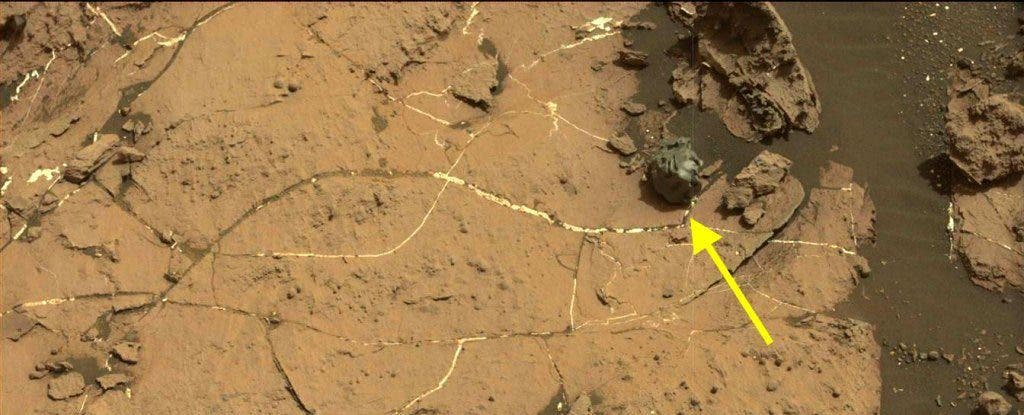While taking its usual stroll on Mars, the Curiosity Rover found something unexpected: a dark, smooth meteorite. That in itself wouldn’t be too strange because meteorites are quite common on the Red Planet – due to its thin atmosphere and relative proximity to the asteroid belt. But this one was unusual.

Based on its appearance, we can already say quite a lot about it. Its shape was what attracted the scientists. It’s unusually smooth, almost as if someone polished it. It also has two deep grooves — both things suggest that it melted almost completely at one point in its history. It seems to be made of iron-nickel, as are many objects in the asteroid belt.
The object was probably thrown out of the asteroid belt by Jupiter’s gravity at one point. As it hurdled towards Mars, it partially melt in the planet’s atmosphere, but still managed to reach the surface of the planet mostly intact – on Earth, this wouldn’t happen because our atmosphere is simply stronger and would completely disintegrate the rock. In fact, this is why astronomers and geologists are equally interested in studying Mars meteorites.
Not only is the atmosphere on Earth more likely to destroy meteorites, but even those which survive are much heavier oxidized, their chemistry altered by local processes. Mars, on the other hand, has much less oxidation and erosion, and meteorites on the Red Planet are much closer to their initial state and can, therefore, tell us more about the early stages of the solar system.
As for Curiosity, its valiant mission continues. The rover has already found evidence of flowing water and is now looking for evidence of habitability. Since it’s not really allowed to screen the water directly, it must look for evidence in rocks instead. Curiosity is currently roving around the base of Mount Sharp.


